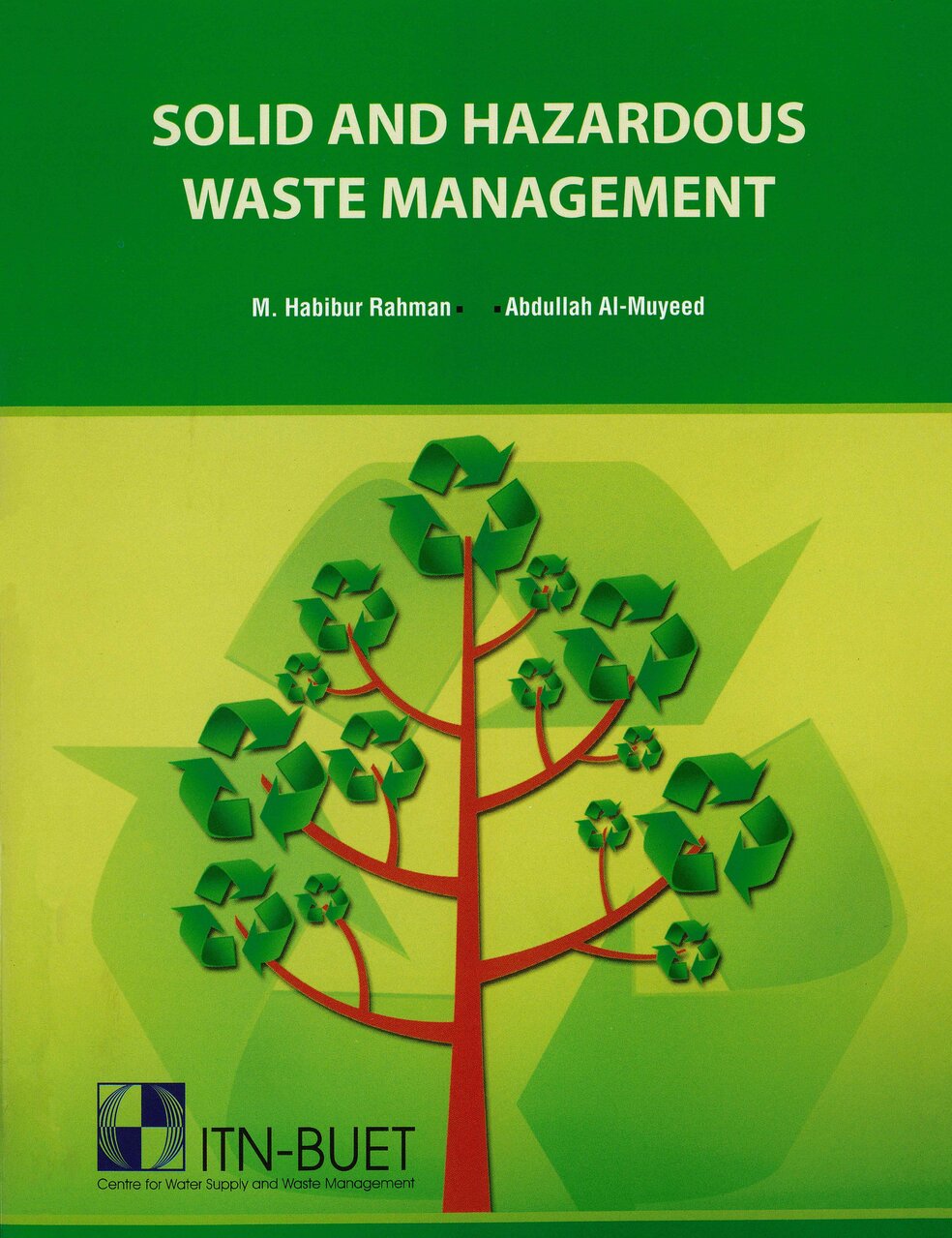The book has been developed for students studying environmental engineering focused on solid and hazardous waste treatment and management and their teachers at technical institutions in Bangladesh. It is also meant for professionals already working in this SHWM sector, who can use the textbook for reference. This book comprises of 11 chapters where the first chapter covers general description of solid waste management (SWM) and historical background of SWM system. It also describes the stream of practice of SWM system in Bangladesh as well as institutional aspects and legal framework that exist at present in the country. The second chapter includes composition and physical properties of solid waste, the mass balance theory during energy evolve in any treatment facility. It also includes the case study of banning polythene and its affects in improving quality of the environment in Bangladesh. Chapter three comprises of reduction of solid waste especially at source, on site processing of waste and transportation of waste. The next chapter describes the collection and transferring of waste. It also describes the design of an economic collection system. Chapter five describes recycling and reuse of waste. It also describes material recovery facilities that exist mostly in developed countries but here it is emphasized on practicing this technology in developing countries as well.
From chapter six to chapter ten, the treatment facilities of solid waste are critically discussed. Chapter six describes the anaerobic treatment of waste where biogas production in economic reactor is discussed with emphasis. Biogas, which can play a vital role in renewable energy sector of Bangladesh, is also discussed in this chapter. Chapter seven discusses aerobic treatment/composting technology which is the most suitable option of treatment of solid waste in Bangladesh. Here, an innovative self turning reactor (STR) is introduced as a new treatment option of composting, especially for Bangladesh. Incineration is mostly practiced in the developed world as a treatment option of solid waste. However, sometimes the emission of carbon and dioxin are ignored, which is adverse to the climate. Chapter eight discusses briefly about the incineration technology practiced in SWMS. It also includes pyrolysis and thermal gasification technologies of treating waste. Ultimate disposal of the waste with adequate safety process are explained in Chapter nine. The following chapter discusses the hazardous waste management and details of treatment facilities needed for this type of waste. Finally, chapter eleven describes briefly the life cycle analysis of integrated solid waste management.


